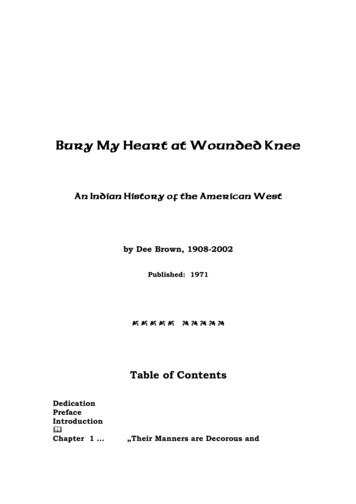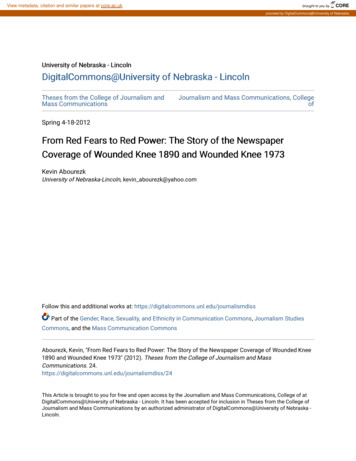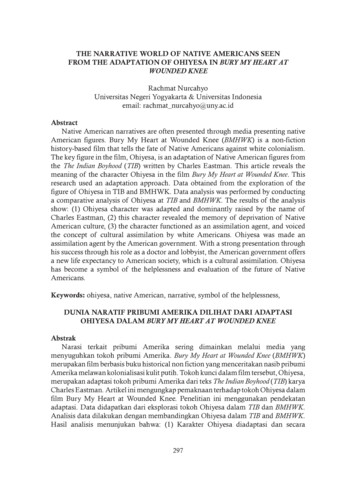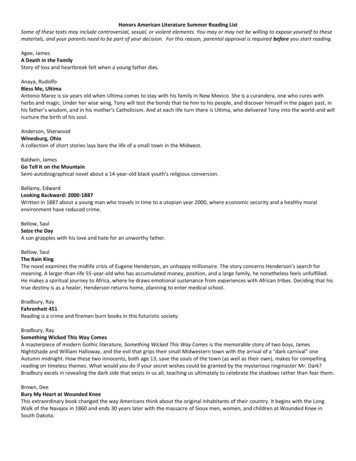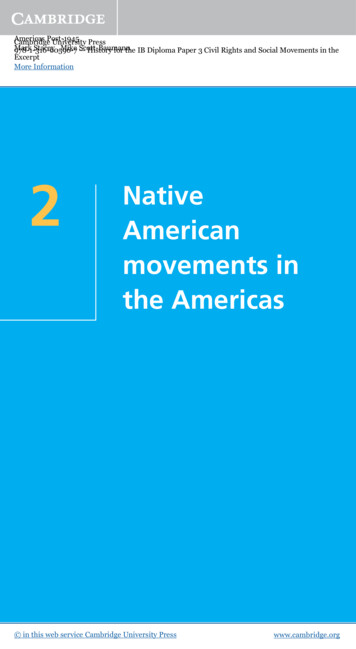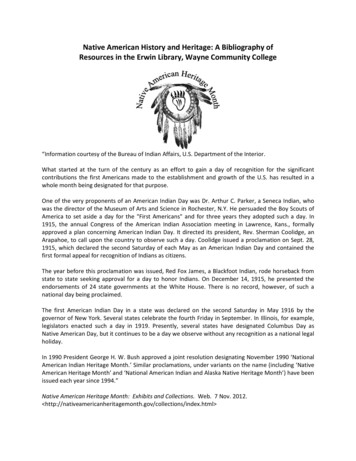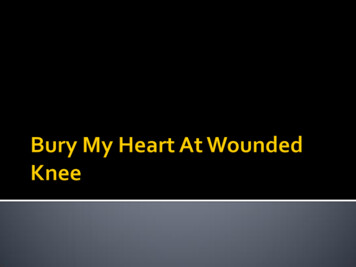
Transcription
Move N.A. west of Mississippi River- “One BigReservation” 1850s- Concentration Policy- definiteboundaries for tribes as American settlerssought western lands 1860s- Small Reservations- Dakota Territoryand Oklahoma 1887- Dawes Act- DIVIDE and assimilate (endtribal way of life) 1934- Indian Reorganization Act- stress tribalunity and autonomy
Movie begins with Battle of Little Bighorn June 25, 1876 Gold seekers and US Army had entered Sioux lands General Custer is defeated- “massacre” Different perspectives Those resisting assimilation, those that are products ofassimilation, American policy makers, Americans hopingto help Americans on the reservations Battle of Wounded Knee December 29, 1890 Ended Ghost Dance movement and armed Siouxresistance
SITTING BULL Sioux holy man Defeated Custer atBattle of LBH Resists submission toUS government policiesthat are designed tobreak up their way oflife Participated in BuffaloBill’s Wild West shows
RED CLOUD Sioux ChiefResisted Americanpressures- both violentlyand diplomatically
HENRY DAWES US SenatorDawes Act!!
CHARLES EASTMAN Sioux doctor who isshown as proof of thealleged success ofassimilation
ELAINE GOODALE EASTMAN Schoolteacher who worksto better conditions forNative Americans on thereservation
WOVOKA Inspires Sioux with GhostDance Set of dances and rites thatwould bring back N.A. lands,way of life and cause thewhites to disappear
DATE EVENT1851 Fort Laramie Treaty1863 “Red Cloud’s War”1868 Treaty of 18681874 Lt. Col. George A. Custer leads a partyinto the Black Hills. Gold is discovered.1875 Gold rush begins in the Black Hills.1876 Battle of the Little Big Horn.1877 Sitting Bull flees to Canada. CrazyHorse surrenders and is killed at FortRobinson, Nebraska.1883 Sitting Bull returns to Standing RockAgency.1887 The Dawes Act is created.1889 Wovoka, a prophet and visionary of thePaiute, has his great vision.From: Wounded Knee Museum1890 April/May: A delegation of Lakota representatives returnsfrom meeting Wovoka and begins to teach the Spirit (Ghost)Dance.August/September: Newspaper reporters begin coverage of the“Ghost Dance”, presenting it as a focal point for an Indianuprising. White settlers are alarmed.October: The Spirit Dance is introduced at Standing RockAgency.November: President Benjamin Harrison orders the military totake control of the Lakota reservations.December 15: The Agent at Standing Rock Agency, JamesMcLaughlin, sends Indian police to arrest Sitting Bull. SittingBull is killed.December 16: Big Foot, leader of a Minneconjou band on theCheyenne River Reservation, is ordered arrested as atroublemaker.December 21: Big Foot learns of the death of Sitting Bull.December 23: Big Foot’s band begins a flight to Pine Ridge Agency.December 28: The band is intercepted by Maj. Samuel Whitesideand the 7th Cavalry. The band is escorted to a camp site onWounded Knee Creek.December 29: Forsyth decides to disarm the Lakota. A shot isfired, and the massacre begins. Up to 300 Lakota men,women, and children are killed.1891 January 1: A burial party returns to the site of the massacre.They bury 146 Lakota bodies in a mass grave.
Describe different perspectivesLegislation and eventsVarious attempts at solutions for NativeAmericans and US
Wounded Knee Creek. December 29: Forsyth decides to disarm the Lakota. A shot is fired, and the massacre begins. Up to 300 Lakota men, women, and children are killed. 1891 January 1: A burial party returns to the site of the massacre. They bury 146 Lakota bodies in a mass grave. From: Wounded Knee Museum
